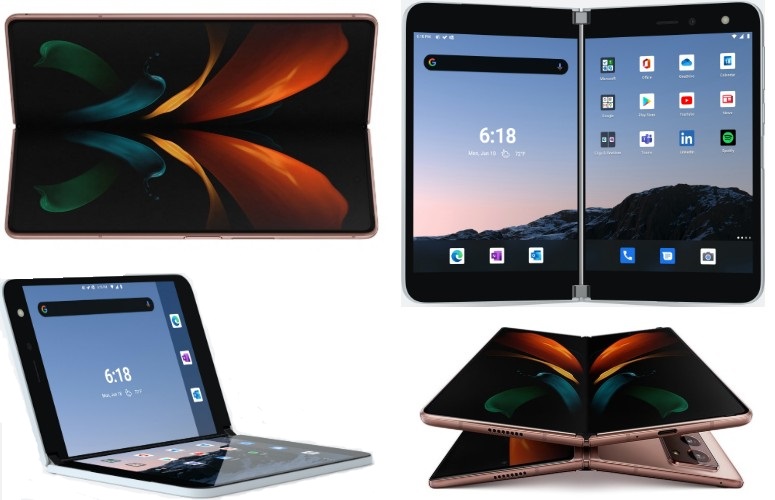Microsoft Surface Duo — why its screen isn’t bendy like the Galaxy Z Fold 2
Microsoft doesn't care for bendable displays

The Microsoft Surface Duo is finally here!
Microsoft is redipping its toes into the smartphone market for the first time since its Windows Phone attempt 10 years ago, and now it's jumping into the foldable space. But what makes the Surface Duo different from its pliable counterparts, like the Samsung Galaxy Z Fold 2? It doesn't have a bendy display — and a Surface Duo team member told us why during yesterday's virtual briefing.
- Microsoft Surface Duo flipping in this video tickles my toddler-like attention span
- Microsoft Surface Duo: Rumors, release date, price and what we want
- Microsoft pauses Surface Neo development — Surface Duo to arrive on time
Here's why Microsoft couldn't care less about bendable displays
While smartphone makers such as Samsung are attempting to defy logic by developing bendable screens, Microsoft isn't jumping on the bandwagon. Instead, the Redmond-based tech giant decided to develop 5.6-inch, dual-screen displays — connected by the company's smallest custom 360-degree hinge — to achieve the Surface Duo's foldable characteristics.

One reason for this, according to Microsoft Technical Fellow Steven Bathiche, is durability.
"We wanted real ion-exchange glass, and that’s because it’s the best at resisting scratches and cracks. We wanted you to be able to fold the Duo back and leave it there, and so we needed a 360-degree hinge, and strong glass doesn’t bend."
The Microsoft Surface Duo team didn't want to bother using ultra-thin glass technology (like Samsung did for the Galaxy Z Fold 2) because that would require another layer of plastic to protect the glass, which the Duo team was not on board with.
Another reason Microsoft veered off the bendable-screen path is that it wanted to ensure the smartphone-tablet hybrid could support Surface Pen input.
Sign up to receive The Snapshot, a free special dispatch from Laptop Mag, in your inbox.

"We didn’t want you to worry about potentially denting your screen while you’re writing," Bathiche said.
To recap Bathiche's points, Microsoft doesn't want the Duo to be another boring ol' open-and-close experience like the Galaxy Z Fold 2. Instead, the Redmond-based tech giant wanted to develop a Surface Pen-compatible device that can offer 360-degree foldable capabilities, which a bendable glass display cannot support.
With Microsoft's dual-screen mechanism, you can fold the phone all the way back to make calls and send texts.

The dual-screen architecture also allows you to transform the Duo into a number of different modes, including tent mode, tablet mode, clamshell mode and more. And for that reason, Microsoft decided that a dual-screen mechanism — as opposed to a bendy display with limited flexibility — was the best option.
The Microsoft Surface Duo is now available for pre-orders and will hit store shelves on Sept. 10. The dual-screen device will set you back $1,399, and it comes equipped with a Qualcomm Snapdragon 855 processor, 6GB of RAM and up to 256GB of storage.
Kimberly Gedeon, holding a Master's degree in International Journalism, launched her career as a journalist for MadameNoire's business beat in 2013. She loved translating stuffy stories about the economy, personal finance and investing into digestible, easy-to-understand, entertaining stories for young women of color. During her time on the business beat, she discovered her passion for tech as she dove into articles about tech entrepreneurship, the Consumer Electronics Show (CES) and the latest tablets. After eight years of freelancing, dabbling in a myriad of beats, she's finally found a home at Laptop Mag that accepts her as the crypto-addicted, virtual reality-loving, investing-focused, tech-fascinated nerd she is. Woot!

